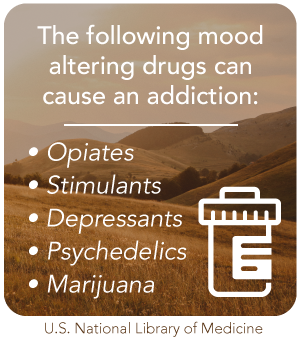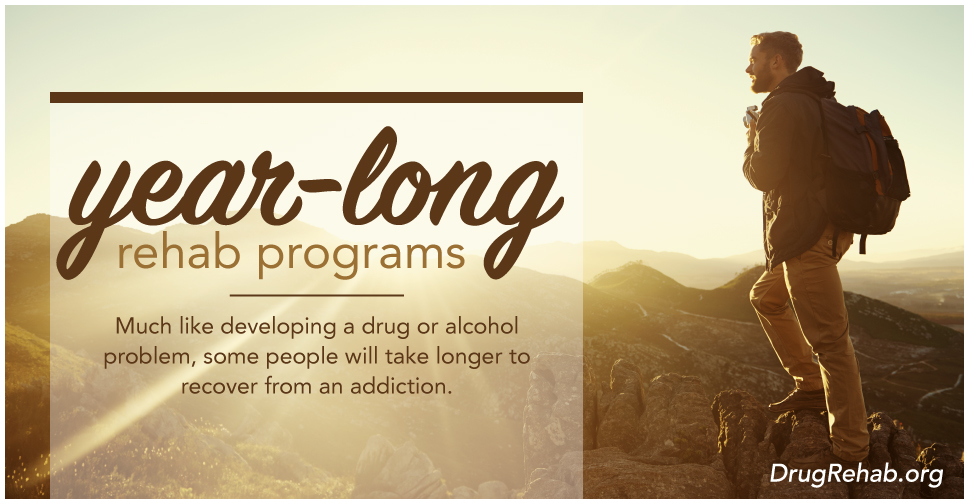
Most people who become good at something don’t always start off that way; it usually comes with practice. Obviously there’s natural talent, but typically people don’t learn how to do something over night. The same can be true with addiction, and for the most part, people don’t start off addicted—some people might abuse drugs and alcohol occasionally for years before they become dependent on them. So how does that work into treatment?
Similar to learning these behaviors it can take time to unlearn them. Much like developing a drug or alcohol problem, some people will take longer to recover from an addiction. Addictions are chronic relapse diseases of the body and mind—usually characterized by strong urges and cravings to use a drug even when that drug causes other problems in their life. It can be extremely difficult to quit using drugs once you’ve become addicted to them.
What Types Of Drugs Can Cause Addiction?
Pretty much any mood altering drug can cause an addiction. In other words, if a substance makes a person feel mentally different—they can become addicted. This list provided by the U.S. National Library of Medicine might make it a little easier to understand.
- Opiates and other narcotics are powerful painkillers that can cause drowsiness and sometimes intense feelings of well-being, elation, happiness, excitement, and joy. These include heroin, opium, codeine, and narcotic pain medicines that may be prescribed by a doctor or bought illegally.
- Stimulants are drugs that stimulate the brain and nervous system. They include cocaine and amphetamines, such as drugs used to treat ADHD (methylphenidate, or Ritalin). A person can start needing higher amounts of these drugs over time to feel the same effect.
- Depressants cause drowsiness and reduce anxiety. They include alcohol, barbiturates, benzodiazepines (Valium, Ativan, Xanax), chloral hydrate, and paraldehyde. Using these substances can lead to addiction.
- LSD, mescaline, psilocybin (“mushrooms”), and phencyclidine (PCP, or “angel dust”) can cause a person to see things that are not there (hallucinations) and can lead to psychological addiction.
- Marijuana (cannabis, or hashish).
Substance Use Disorder Versus Addiction
If someone has a substance use disorder, they are very likely to face an addiction later on down the road. Although the idea of a substance use disorder and addiction are similar, there are differences. “Substance use disorders occur when the recurrent use of alcohol and/or drugs causes clinically and functionally significant impairment, such as health problems, disability, and failure to meet major responsibilities at work, school, or home” (Substance Abuse and Mental Health Services Administration – SAMHSA).
With an addiction, a person will have all of those signs, but there are several stages that can lead them there. Those stages are defined by the U.S. National Library of Medicine as:
- Experimental use. Typically involves peers, done for recreational use; the user may enjoy defying parents or other authority figures.
- Regular use. The user misses more and more school or work; worries about losing drug source; uses drugs to “fix” negative feelings; begins to stay away from friends and family; may change friends to those who are regular users; shows increased tolerance and ability to “handle” the drug.
- Problem or risky use. The user loses any motivation; does not care about school and work; has obvious behavior changes; thinking about drug use is more important than all other interests, including relationships; the user becomes secretive; may begin dealing drugs to help support habit; use of other, harder drugs may increase; legal problems may increase.
- Addiction. Cannot face daily life without drugs; denies problem; physical condition gets worse; loss of “control” over use; may become suicidal; financial and legal problems get worse; may have broken ties with family members or friends.
So How Do I Quit Using Drugs?
Quitting drugs can take a lot more than a resolution, and a complete admission that there’s a problem is likely to happen. This is usually in sync with a desire to stop using drugs, but not always and people can be trained to stop using drugs. There are several different approaches to treatment—inpatient residential treatment and outpatient treatment are the two main classifications. Once they’ve decided whether or not a residential treatment is necessary, some check into a short-term treatment program, whereas others might need a long-term treatment program.
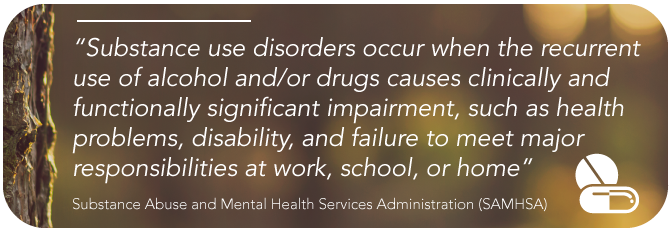
This notion is affirmed by the National Institute on Drug Abuse, “quitting usually takes more than good intentions or a strong will. Drugs change the brain in ways that make quitting hard, even for those who want to.” Though some people are able to quit with minimal treatment, there is still a very real possibility of relapse.
Relapse is tragic, because here’s a person who may have lost everything due to drugs—perhaps they have serious health problems or maybe they’ve lost their good looks, friends and family, career, or home. Maybe they have sworn off drugs or alcohol a hundred times; even the point that their friends and family just don’t want to hear it anymore.
Principles Of Effective Treatment
So what makes a treatment work? It can vary from client to client, because some people have different backgrounds with substances. Along with the drug of choice, environmental and genetic factors can be a huge part of a person’s history of drug use. From the National Institute of Drug Abuse (NIDA), the principles of effective treatment are as follows:
- Addiction is a complex but treatable disease that affects brain function and behavior.
- No single treatment is appropriate for everyone.
- Treatment needs to be readily available.
- Effective treatment attends to multiple needs of the individual, not just his or her drug abuse.
- Remaining in treatment for an adequate period of time is critical.
- Behavioral therapies—including individual, family, or group counseling—are the most commonly used forms of drug abuse treatment.
- Medications are an important element of treatment for many patients, especially when combined with counseling and other behavioral therapies.
- An individual’s treatment and services plan must be assessed continually and modified as necessary to ensure that it meets his or her changing needs.
- Many drug-addicted individuals also have other mental disorders.
- Medically assisted detoxification is only the first stage of addiction treatment and by itself does little to change long-term drug abuse.
- Treatment does not need to be voluntary to be effective.
- Drug use during treatment must be monitored continuously, as lapses during treatment do occur.
- Treatment programs should test patients for the presence of HIV/AIDS, hepatitis B and C, tuberculosis, and other infectious diseases as well as provide targeted risk-reduction counseling, linking patients to treatment if necessary.
How Many People Have A Substance Use Disorder?
Substance use disorders and addiction are an epidemic—not only do those who fall victim to them lose jobs, but they’re also more likely to have other mental disorders as well. “An estimated 43.6 million Americans ages 18 and up experienced some form of mental illness. In the past year, 20.2 million adults had a substance use disorder” (SAMHSA).
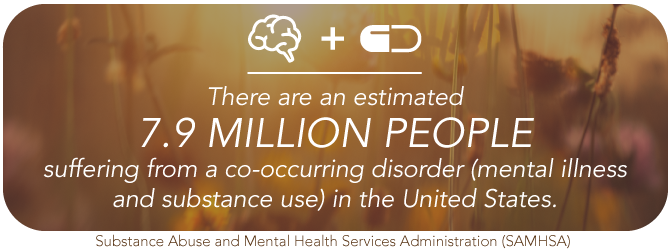
This occurrence is known as a dual diagnosis or a co-occurring disorder; these can be difficult to treat, and more often than not; the longer the treatment, the better. There are an estimated 7.9 million people suffering from a co-occurring disorder in the United States.
Year-Long Inpatient Treatment Methods
There are a lot of different treatment modalities for a substance use disorder, addiction and co-occurring disorder. Inpatient residential treatment isn’t the only option either; some people aren’t able to get away from their other priorities to focus completely on addiction treatment, and outpatient treatment can be a better option. Some of the most commonly utilized year-long treatment programs are:
- Motivational Interviewing
- Dialectical Behavior Therapy
- Cognitive Behavioral Therapy
- Contingency Management
- Medication-Assisted Therapy
Motivational Interviewing
Sometimes people need a little positive reinforcement and encouragement to help them along the way—especially when dealing with an addiction. Motivational interviewing can offer the help that patients need to help them along their journey to a healthy and happy recovery. From the U.S. National Library of Medicine, “it is a way to interact with substance-using clients, not merely as an adjunct to other therapeutic approaches, and a style of counseling that can help resolve the ambivalence (mixed feelings) that prevents clients from realizing personal goals.”
Motivational interviewing can help a person who’s suffering from a substance use disorder realize their true potential. It can help them set achievable goals, and also teach them how to reach them.
Dialectical Behavior Therapy
Dialectical behavior therapy is also based on the idea that negative behaviors can be replaced with positive ones. One of the biggest contributors to relapse is treatment and therapy dropout; unless a person is forced by the legal system, or employer to stay in treatment they are free to leave at their own will—this is one of the biggest issues in long-term treatment. Dialectical behavior therapy helps lower the treatment dropout rate.
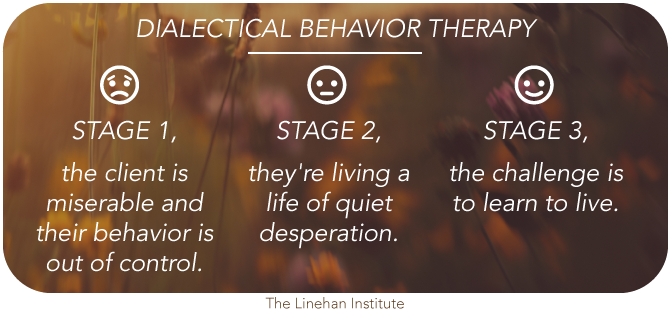
This form of therapy works in four different phases; not only keeping treatment interesting, but also helping a person suffering from addiction to feel accomplished and realize that even though recovery isn’t easy, it’s satisfying. Those four treatments are described by The Linehan Institute as:
- In Stage 1, the client is miserable and their behavior is out of control: they may be trying to kill themselves, self-harming, using drugs and alcohol, and/or engaging in other types of self-destructive behaviors. When clients first start DBT treatment, they often describe their experience of their mental illness as “being in hell.” The goal of Stage 1 is for the client to move from being out of control to achieving behavioral control.
- In Stage 2, they’re living a life of quiet desperation: their behavior is under control but they continue to suffer, often due to past trauma and invalidation. Their emotional experience is inhibited. The goal of Stage 2 is to help the client move from a state of quiet desperation to one of full emotional experiencing. This is the stage in which post-traumatic stress disorder (PTSD) would be treated.
- In Stage 3, the challenge is to learn to live: to define life goals, build self-respect, and find peace and happiness. The goal is that the client leads a life of ordinary happiness and unhappiness.
- For some people, a fourth stage is needed: finding a deeper meaning through a spiritual existence… In this stage, the goal of treatment is for the client to move from a sense of incompleteness towards a life that involves an ongoing capacity for experiences of joy and freedom.
Cognitive Behavioral Therapy
Cognitive behavioral therapy (CBT) helps a person figure out what their current problems are and fix them. It is one of the best ways to fight against relapse, cognitive behavioral therapy helps a person realize what their triggers are and then how to deal with them when they arise. There are a lot of different triggers that someone suffering from a substance use disorder or addiction comes across on a daily basis, some of which they might not even recognize—CBT can help them address those problems.
From the U.S. National Library of Medicine, “the most important thing is helping people to help themselves: They should be able to cope with their lives again without therapy as soon as possible. This does not mean that cognitive behavioral therapy completely ignores the influence of past events. But it mainly deals with identifying and changing current distressing thought and behavioral patterns.”
Contingency Management
Contingency management uses drug testing and a reward system to help a person refrain from using drugs and alcohol. It can be highly effective, and like the other treatment programs, contingency management fights against a person’s normal behavior to aid in the recovery process. Contingency management can help a person suffering from an addiction to cocaine, heroin, marijuana, opioids, and others to begin a healthy recovery.
Detoxification Comes Before Treatment
Recovery truly begins with detoxification which is the clearing of a substance from one’s system. No matter which treatment program or length that a person will go to treatment, they will need to start out with a clean slate (so to speak) there is no better way to start out rehab than with no drugs in your system. During the detoxification process a person is likely to experience withdrawals, which can be extremely painful and can last up to a month or longer depending on the drug and the frequency of use.
Medication-Assisted Therapy
Some withdrawals can be so intense that they end in relapse—opiates and alcohol can have withdrawal symptoms that can’t be difficult to manage without medication. Though most anti-opioid medications aren’t intended to be taken for the duration of long-term treatment. “For methadone maintenance, 12 months is considered the minimum, and some opioid-addicted individuals continue to benefit from methadone maintenance for many years” (National Institute on Drug Abuse – NIDA).
Things To Consider When Choosing Treatment
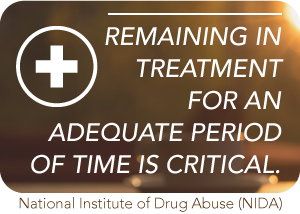 One of the most important decisions can be the length of time that you choose to go to treatment. Long-term treatment can be anything from 30 days, 60 days, 90 days, 12 months or longer. There are millions of people with a substance use disorder or addiction and a lot of them can’t seem to stop on their own.
One of the most important decisions can be the length of time that you choose to go to treatment. Long-term treatment can be anything from 30 days, 60 days, 90 days, 12 months or longer. There are millions of people with a substance use disorder or addiction and a lot of them can’t seem to stop on their own.
As mentioned before, “remaining in treatment for an adequate period of time is critical” this is one of the main points to take from this and truly the longer the treatment, the better. Another theory from the researchers at NIDA is that treatment for “less than 90 days is of limited effectiveness, and treatment lasting significantly longer is recommended for maintaining positive outcomes..” Any length of rehab isn’t the beginning and end to recovery; recovery is a lifelong journey.
Finding The Right Treatment For You
This can all seem daunting—how can anyone pick up and leave their life behind for a year? If you really think about it, a year is a small fraction of your life, especially if it can help you kick an addiction. If you’re afraid of change or afraid of failure, you aren’t alone. Just remember that there are a lot of people who feel the same way who found the help of professionals and now lead a substance free life.
Contact us now at 1-833-473-4227 if you’re ready to take the next step, or have any questions about addiction treatment. There’s a treatment program right for you, and we will help you find it!
For More Information Related to “Year-Long Drug Rehab Programs” Be Sure To Check Out These Additional Resources From DrugRehab.org:
- The Importance of Aftercare When Leaving A Drug And/Or Alcohol Rehab Program
- How Do I Get My Loved One Into Rehab?
- Scholarships And Grants To Cover Costs Of Drug Rehabilitation
- Understanding A Heroin Use Disorder
- Long Term Drug Rehab Centers and Extended Treatment
- Paying For Drug Rehab With Insurance
- Short Term Drug Rehab and Addiction Treatment Centers
- What Is Client-Centered Therapy For Addiction Treatment
Sources
National Institute on Drug Abuse – How Long Does Drug Addiction Treatment Usually Last?
National Institute on Drug Abuse – Principles of Effective Treatment
Substance Abuse and Mental Health Services Administration – Mental and Substance Use Disorders
U.S. National Library of Medicine – Cognitive Behavioral Therapy

